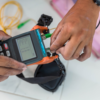Bridging Technological Advances
Earthquake detection and monitoring have become crucial in mitigating the devastating effects of earthquakes. Advances in technology have significantly improved our ability to predict and respond to seismic activities. This article explores the latest innovations in earthquake detection, highlighting key technologies and methodologies, while also drawing parallels to the deployment and regulation of fiber optics in Cyprus, a topic of growing importance.
The Importance of Early Detection
Early detection of earthquakes is vital for minimizing damage and saving lives. Technologies such as seismic sensors, GPS, and machine learning algorithms are increasingly being used to detect and analyze seismic activities. These tools help in providing early warnings and accurate predictions of earthquake occurrences. Similarly, the installation of fiber optic cables in Cyprus requires stringent regulations to ensure safety and efficiency.
Advanced Seismic Sensors
Seismic sensors are the backbone of earthquake detection systems. Modern sensors are highly sensitive and can detect minute ground movements. These sensors are often distributed across vast geographical areas to provide comprehensive data on seismic activities. The data collected by these sensors is analyzed to identify potential earthquake patterns. In a similar vein, the installation of fiber optics in Cyprus relies on precise standards to maintain network integrity and performance.
GPS and Satellite Technology
GPS and satellite technology play a crucial role in monitoring tectonic movements. By analyzing changes in the Earth’s crust, scientists can predict possible earthquake events. These technologies provide real-time data, which is essential for accurate forecasting and timely warnings. The same technological precision is required in deploying fiber optics in Cyprus to ensure robust telecommunications infrastructure.
Machine Learning and Artificial Intelligence
Machine learning and AI are revolutionizing earthquake detection. These technologies analyze vast amounts of seismic data to identify patterns and predict earthquakes with high accuracy. AI algorithms can process data faster than traditional methods, providing quicker and more reliable predictions. This advancement in AI parallels the need for sophisticated technology in managing fiber optics installations in Cyprus.
Community Engagement and Preparedness
Public awareness and preparedness are key components of earthquake mitigation. Education and community engagement programs help people understand the risks and take necessary precautions. Technologies like mobile apps and social media are used to disseminate information quickly during an earthquake event. Similarly, educating the public about the benefits and regulations of fiber optic installations in Cyprus can enhance acceptance and understanding.
Conclusion
Advancements in earthquake detection and monitoring technologies have significantly enhanced our ability to predict and respond to seismic activities. Continued research and development in this field are essential for improving the accuracy and reliability of earthquake predictions, ultimately saving lives and reducing damage. These technological strides also highlight the importance of regulatory compliance in the deployment of fiber optics solutions in Cyprus, ensuring a future-proof and resilient telecommunications network.
For more in-depth information on earthquake detection technologies, visit the IEEE Spectrum article on earthquake detection.



















